Jurassic Paint | New Scenario
Keywords: exhibition, jurassic paint, Tilman Hornig
Works on canvas and life size dinos.


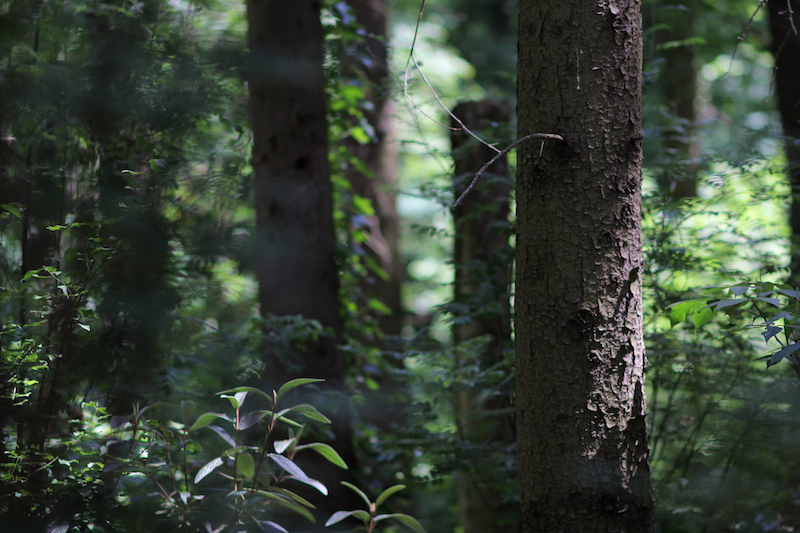

Jurassic Paint is the second online show brought to you by New Scenario (see the first one, CRASH). Shot in the forest of Saurierpark, Kleinwelka, this group show combines two prehistoric yet resilient species. Wereas painting is a creative act of the imagination, the dinosaurs’ appearance emerges from fanciful and narrative processes of the human and scientific mind. In this show paintings and dinosaurs share the same Lebensraum, creating a new scenario.
Works on canvas and life size dinos.
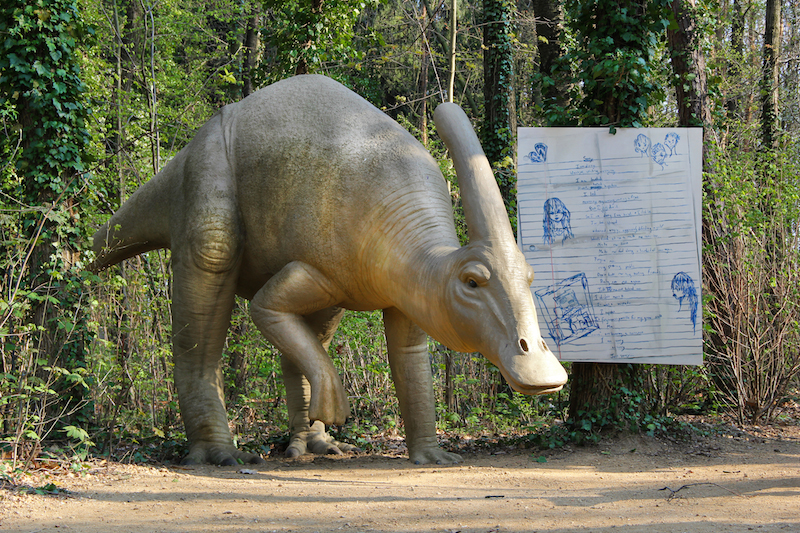
Ann Hirsch, My Starving Public 1998, 2014.
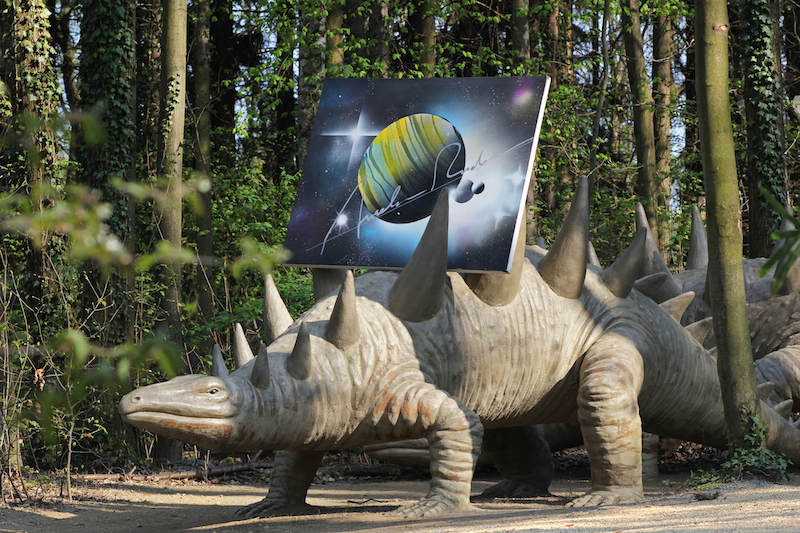
Anselm Ruderisch, Voyager1, 2009.
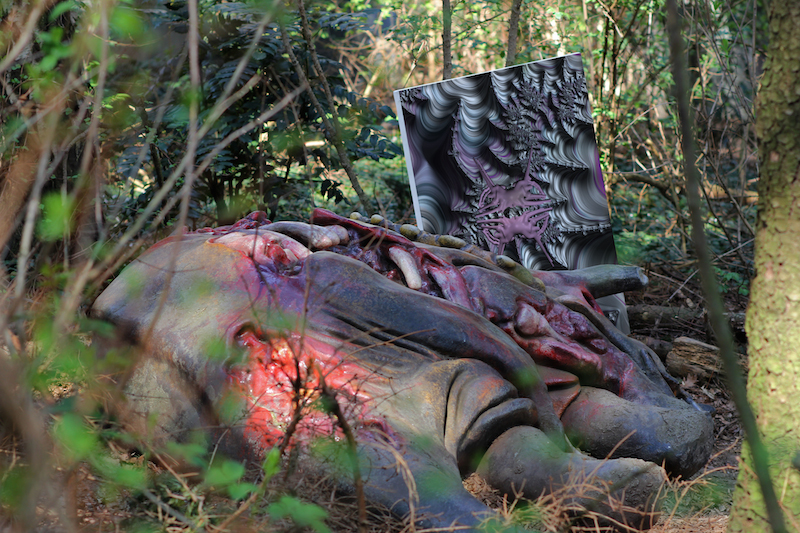
Iain Ball, (res) terbium series (3), 2015.
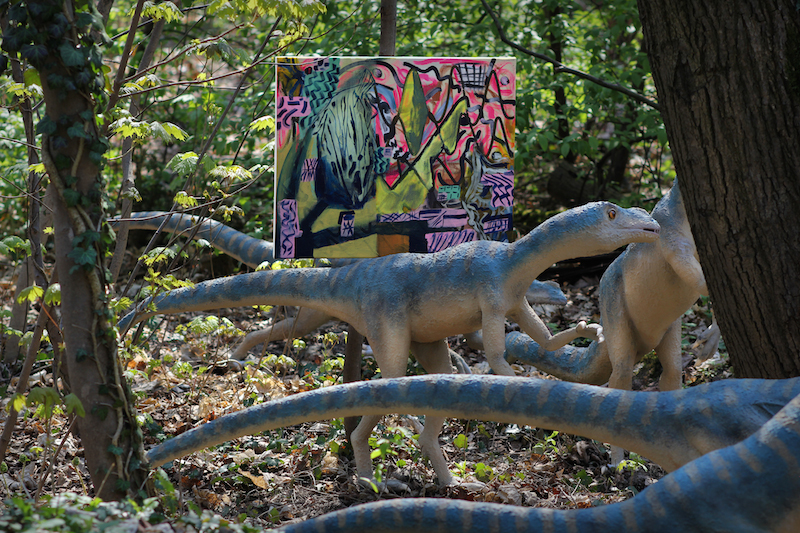
Jaako Pallasvuo, Amusement Park, 2015.
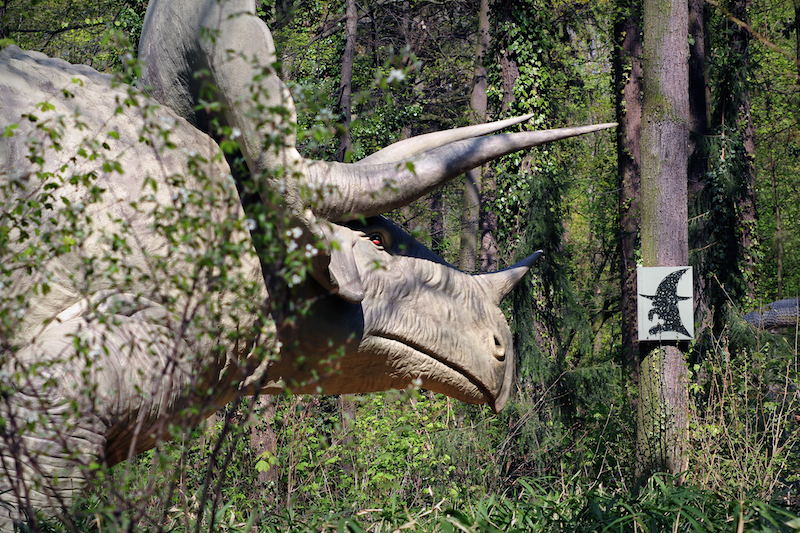
Joshua Abelow, Untitled (Witch), 2015.
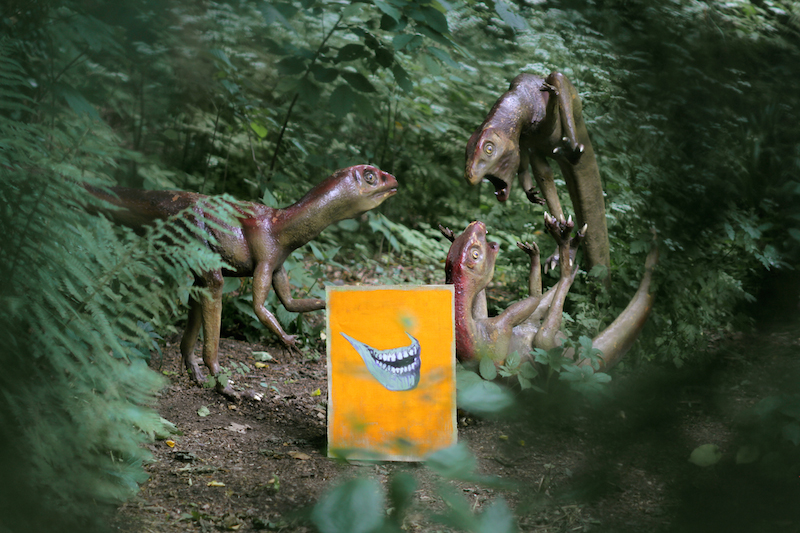
Martin Mannig, Psycho, 2014.
dinosaurs
The last time I saw dinosaurs, I was taking my son to the playground in front of KW in Berlin-Mitte. One of the kids played with dinosaurs in the sandbox. One of the fathers asked: “Dinosaurs? Is that still a thing?”
I took a look at the plastic monsters that were lying in the sand. They looked the same way the dinosaurs looked in my childhood. “When weren’t dinosaurs a thing?”, I wondered and started googling. “Beginning in 1974 Invicta Plastics of Leicestershire, England produced a line of twenty-three dinosaur toys in conjunction with The British Museum of Natural History”, I learned.
The first dinosaurs produced were the Blue Whale, Plesiosaurus and Icthyosaurus and Liopleurodon. All in hard monochrome plastic. They were an unexpected hit. The Museum ordered more and more dinosaurs. Toy companies soon started spitting out dinosaurs. Post-baby-boomers born in the Seventies were the first generation to grow up with dinosaurs.
A strange idea, to give children, of all animals, dinosaurs to play with. Humans and dinosaurs never roamed the earth at the same time. Yet dinosaurs are factual, they are no dragons nor minotaurs, they are no chimeras.
Sitting there by the sandbox at KW, I remembered an interesting text that I have read quite a while ago. Mundus subterraneus from 1664 by the strange Jesuit, Kabbalist, and Alchemist Athanasius Kircher. Being pretty weird overall, Kircher made up the theory that all creation happens in the earth’s core and unfolds, grows from the inside to the surface of the earth. He assumed that fossils weren’t creatures from a distant past, but yet unfinished creatures about to see the surface of the earth and to come into existence one day.
We probably give dinosaurs to children, because we assume that their whole existence is in a state of pre-human becoming. This is what’s so fascinating about dinosaurs. They spell out the non-human, but also in a way non-animal possibilities of DNA. They show a reality completely beyond our own, a reality that’s nevertheless a scientific one. But never forget: all depictions concerning the color, the behavior or anything else of dinosaurs other than their bones are essentially fiction.
By playing with dinosaurs as kids, we follow the path of evolution that leads us from fossils to knights to spaceships and finally to adult stuff. When adults other than paleontologists deal with dinosaurs, they deal with a radical non-human unconscious that is located at the fringes of pop and science, fact and fiction, truth and fantasy. There is a dinosaur, an unfinished species, in all of us.
by Johannes Thumfart
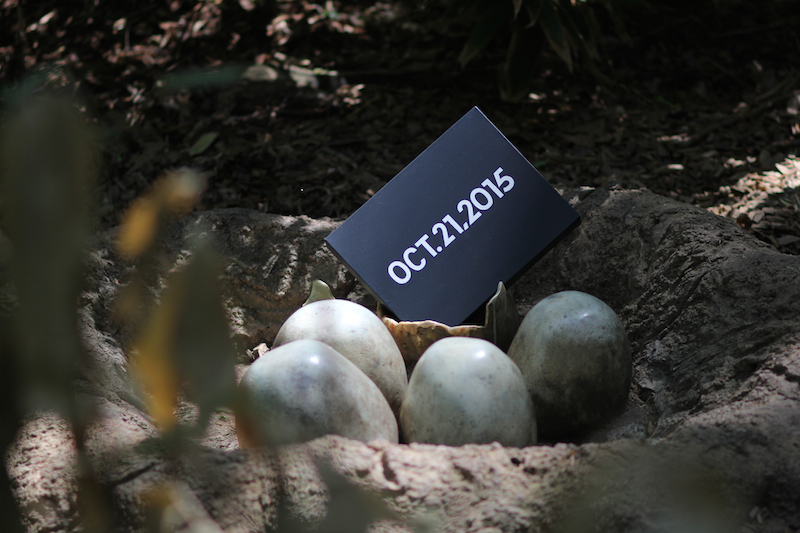
Paul Barsch, O. K.’s Time Travels (Back to the Future), 2013.
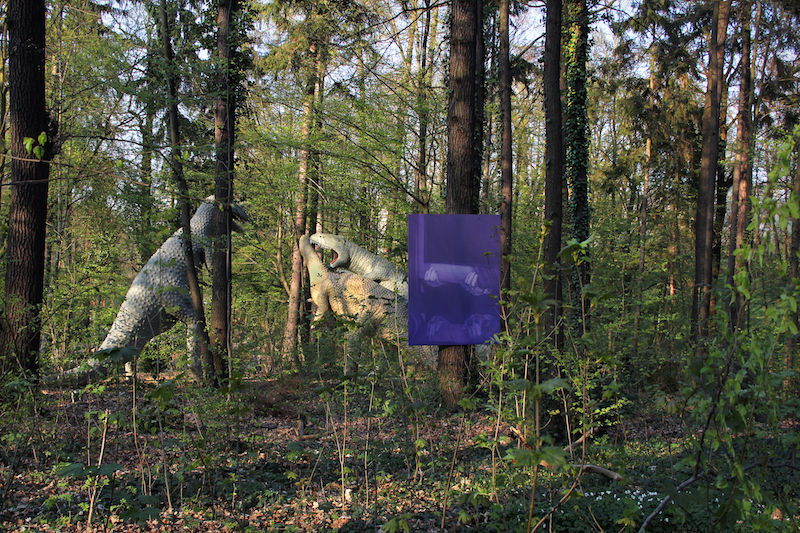
Sayre Gomez, Thief Painting in Violet, 2014.
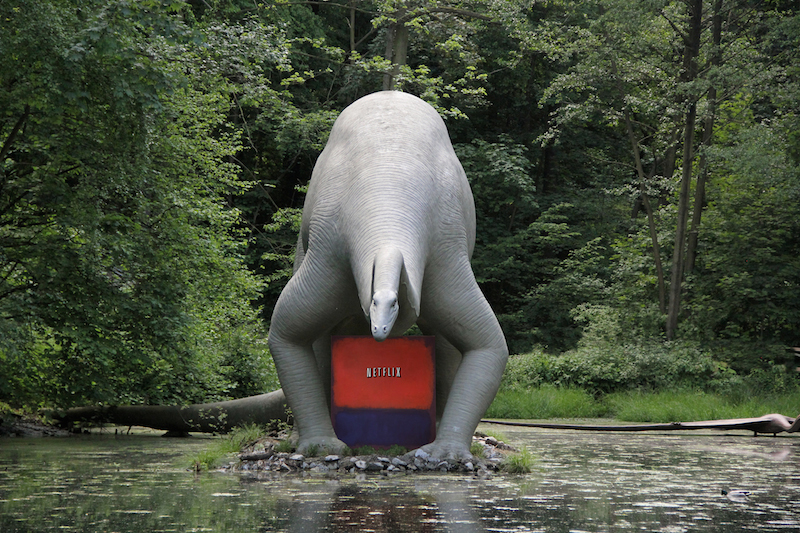
Scott Gelber, RothkoNetflix1, 2015.
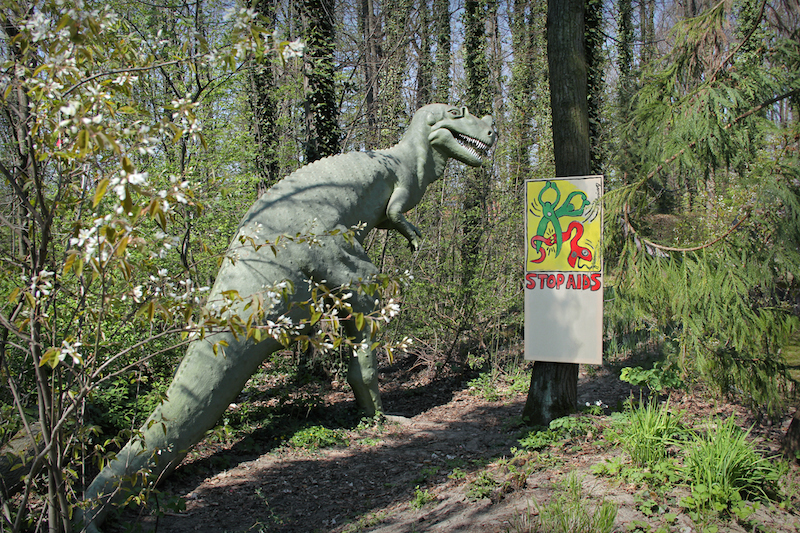
Tilman Hornig, Stop Aids redux, 2015.
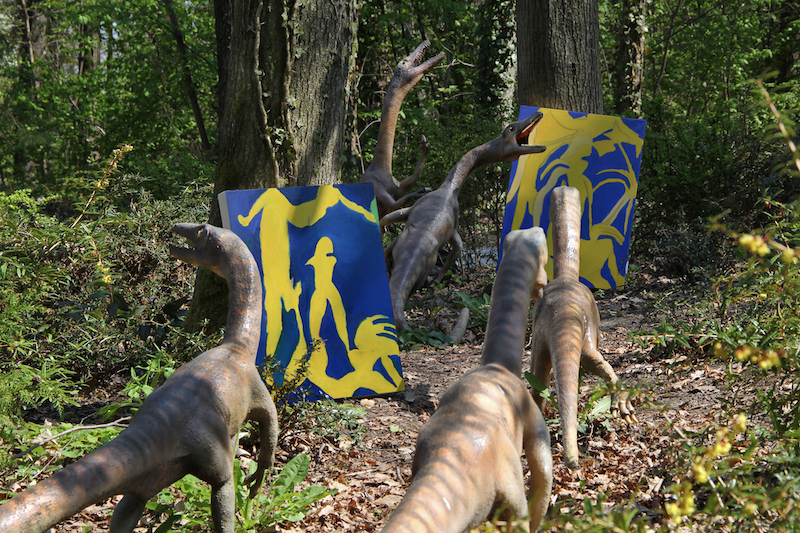
Tom Davis, Ovid-Actaeon, 2015.
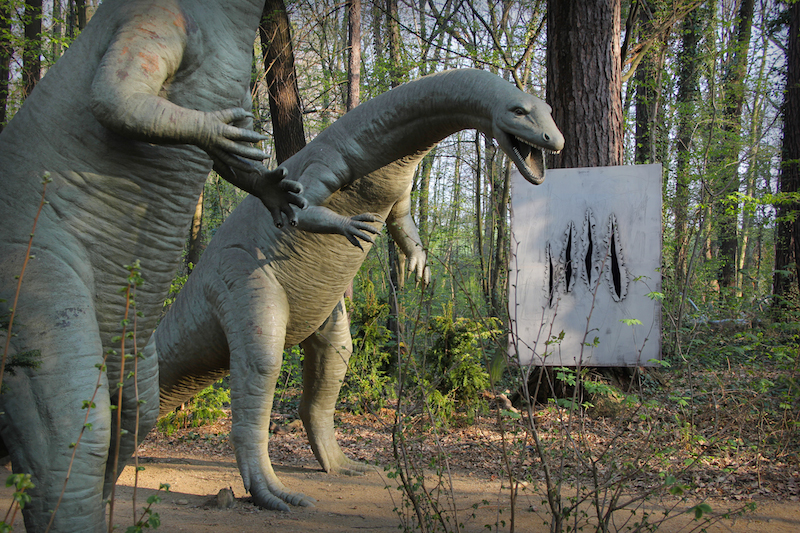
Zoe Barcza, Shred IV, 2014.
New Scenario is a dynamic platform for conceptual, time based and performative exhibition formats. It happens outside the realm of the white cube and is meant to function as an extension to create new contextual meaning.
New Scenario is a project by Paul Barsch & Tilman Hornig